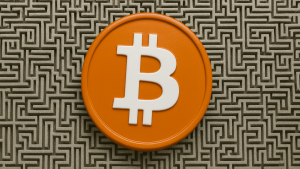Binance CEO CZ begins working on Vitalik Buterin’s ‘safe CEX’ ideas

The collapse of numerous major crypto ecosystems in 2022 revealed the urgent need for revamping the way crypto exchanges operate. Ethereum co-founder Vitalik Buterin believed in exploring beyond “fiat” methods to ensure the stability of crypto exchanges, including technologies such as Zero-Knowledge Succinct Non-Interactive Argument of Knowledge (zk-SNARKs).
Following a discussion with angel investor Balaji Srinivasan and crypto exchanges such as Coinbase, Kraken and Binance, Buterin recommended options for the creation of cryptographic proofs of on-chain funds that can cover investor liabilities when required, also known as safe centralized exchanges (CEX).
Having a safe CEX: proof of solvency and beyondhttps://t.co/AKEweYZfj2
Big thanks to @balajis and staff from @coinbase @binance @krakenfx for discussion!
— vitalik.eth (@VitalikButerin) November 19, 2022
The best case scenario, in this instance, would be a system that does not allow crypto exchanges to withdraw a depositor’s funds without consent.
Vitalik’s new ideas. Working on this.
Just don’t read the title aloud around people (Vitalik wrote it).https://t.co/AtR6KiSx5B
— CZ Binance (@cz_binance) November 19, 2022
Fellow crypto entrepreneur CZ, who has been vocal about Binance’s intent for complete transparency, acknowledged the importance of Buterin’s recommendations, stating:
“Vitalik’s new ideas. Working on this.”
The earliest attempt to ensure fund safety was proof of solvency, wherein crypto exchanges publish a list of users and their corresponding holdings. However, privacy concerns eventually fueled the creation of the Merkle tree technique — which dampened the privacy leakage concerns. While explaining the inner workings of the Merkle tree implementation, Buterin explained:
“The Merkle tree technique is basically as good as a proof-of-liabilities scheme can be, if only achieving a proof of liabilities is the goal. But its privacy properties are still not ideal.”
As a result, Buterin placed his bets on cryptography via zk-SNARKs. For starters, Buterin recommended putting users’ deposits into a Merkle tree and using a zk-SNARK to prove the actual claimed value. Adding a layer of hashing to the process would further mask information about the balance of other users.
Buterin also discussed implementing proof of assets for confirming an exchange’s reserves while weighing the pros and cons of such a system, considering that crypto exchanges hold fiat currencies and the process would require crypto exchanges to rely on trust models better suited for the fiat ecosystem.
While long-term solutions will need the involvement of multisignature and social recovery wallets, Buterin pointed out two alternatives for the short-term — custodial and noncustodial exchanges, as shown below:
“In the longer-term future, my hope is that we move closer and closer to all exchanges being non-custodial, at least on the crypto side,” added Buterin. On the other hand, highly centralized recovery options can be used for wallet recovery for small funds.
Related: Crypto self-custody a ‘fundamental human right’ but not risk-free: Community
On Nov. 4, Buterin added a new category of milestones to the Ethereum technical roadmap — aimed at improving censorship resistance and decentralization of the Ethereum network.
Updated roadmap diagram! pic.twitter.com/MT9BKgYcJH
— vitalik.eth (@VitalikButerin) November 4, 2022
The updated technical roadmap now inserts the Scourge as a new category, which will run parallel to other previously-known segments — the Merge, the Surge, the Verge, the Purge and the Splurge.












